See “Faces of Genocide:” http://www.ricfrancis.net
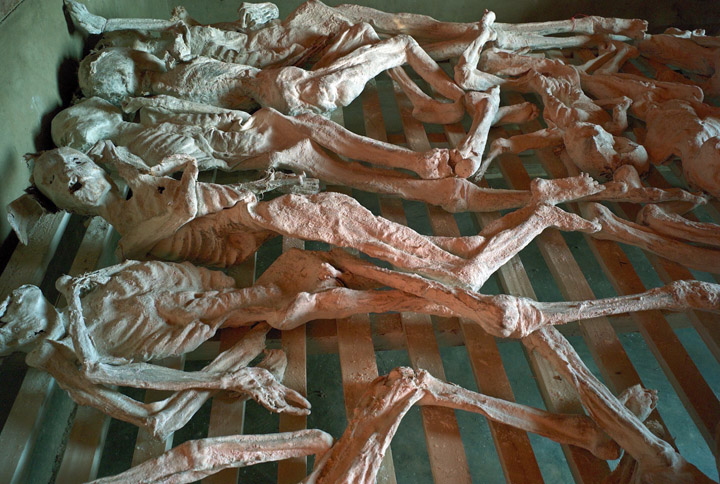
In 1995, the remains of more than 18,000 men, women and children were exhumed from mass graves at the Murambi Technical School, now known as the Murambi Genocide Memorial Centre in southern Rwanda. Although many bodies decomposed completely, the intense heat formed in the pits allowed some of the skeletal remains to be preserved. Most of these corpses were reburied in in common graves at the memorial centre. However, nearly one thousand corpses were further preserved in lime and placed in the school buildings where they were killed.
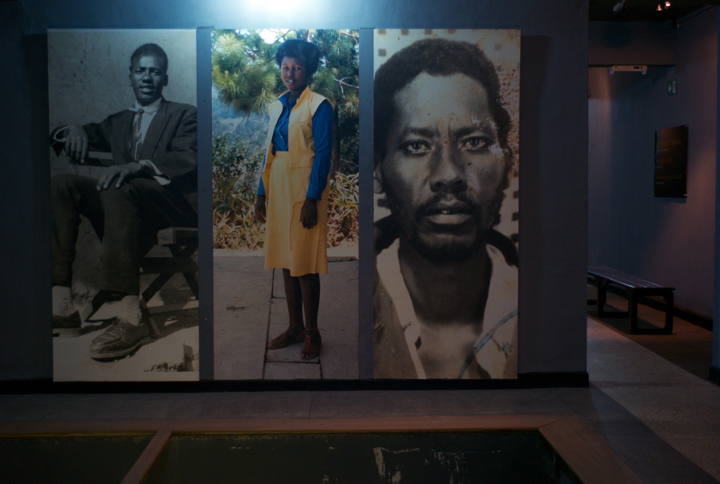
On the walls at the Murambi Genocide Memorial Centre are photographs of victims.
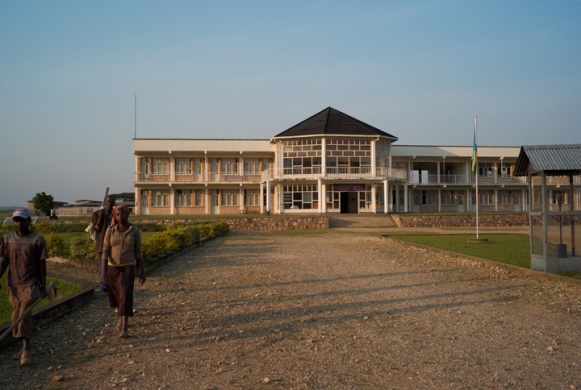
Ground workers depart the Murambi Technical School, which is now known as the Murambi Genocide Memorial Centre in southern Rwanda.
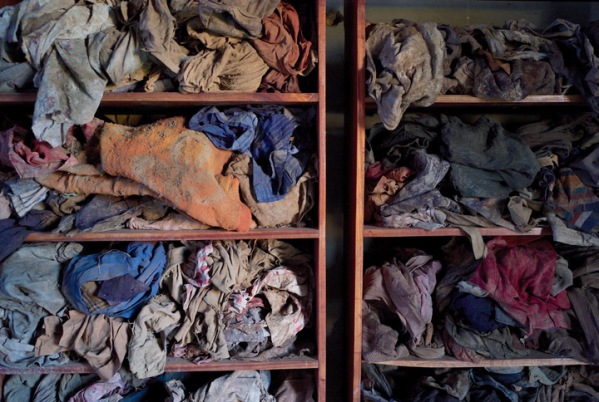
Clothing of genocide victims.
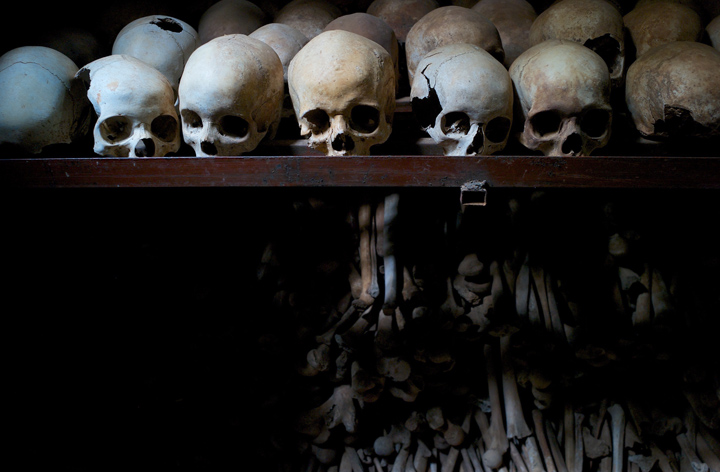
In remembrance of the estimated one million victims killed during the 1994 genocide hundreds of memorial sites are maintained throughout Rwanda. This documentation project covers four of the official national sites as well as the Kigali Genocide Memorial: Ntarama Genocide Memorial, Nyamata Genocide Memorial, Murambi Genocide Memorial and Nyarubuye Genocide Memorial.
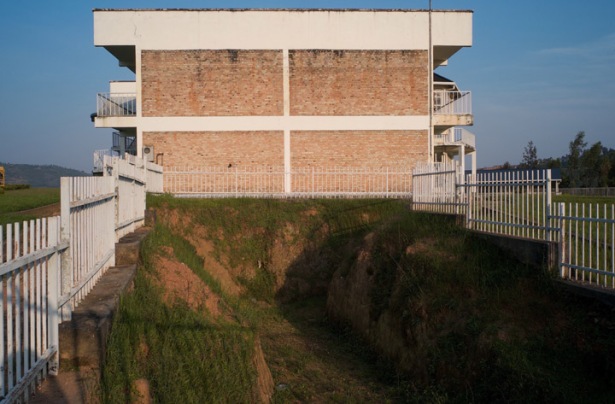
“Over 800 bodies of Tutsis genocide victims were pulled from this mass grave,” said Musoni Protais, a site manager at the Murambi Technical School, which is now known as the Murambi Genocide Memorial Centre.
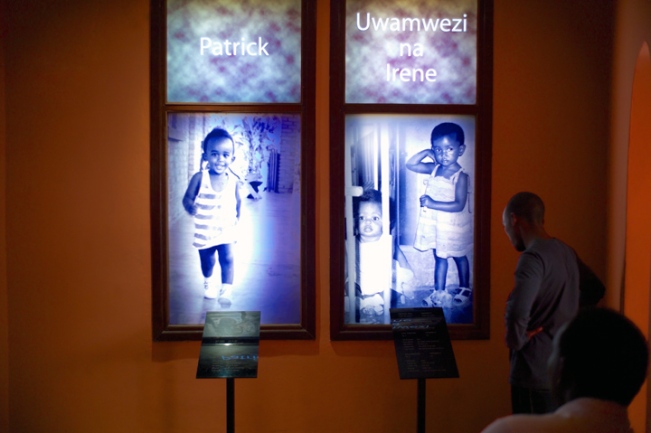
Visitors in the Children’s Room at the Kigali Genocide Museum where photographs and stories of a few of the thousands of children who were killed in the 1994 genocide are on view; below each photograph is a short bio about the children: Patrick, 5-years old, Favorite sport – Riding bicyle, Favorite food – Chips, meat and eggs, Best friend – Alliane, his sister, Behavior – A quiet and well-behaved boy, Cause of death – Hacked by machete. Uwamwezi, 7-years old, and Iréne Umutoni, 6-years old, Relationship – Sisters, Favorite toy – A doll they shared, Favorite food – Fresh fruit, Behavior – Daddy’s girls, Cause of death – A grenade thrown in their shower. Rwandan families donated photographs of their children for the memorial. The memorial museum honors the estimated 250,000 people buried on the site in mass graves.
The visuals provided at the national sites are thought provoking, unforgettable and haunting. Visitors (local and foreign) are strongly encouraged by the government to share in this unconscious chapter of Rwanda’s history.
The Rwanda Genocide was a slaughter of Tutsis and moderate Hutus by members of the Hutu majority. From April to July 1994 an estimated five hundred thousand to one million Rwandans were killed. The genocide grew out of an ongoing civil war between the then Hutu-led government and the Rwandan Patriotic Front (RPF), which was largely composed of Tutsi refugees, whose families had fled to neighboring countries following earlier waves of Hutu violence against the Tutsi minority.
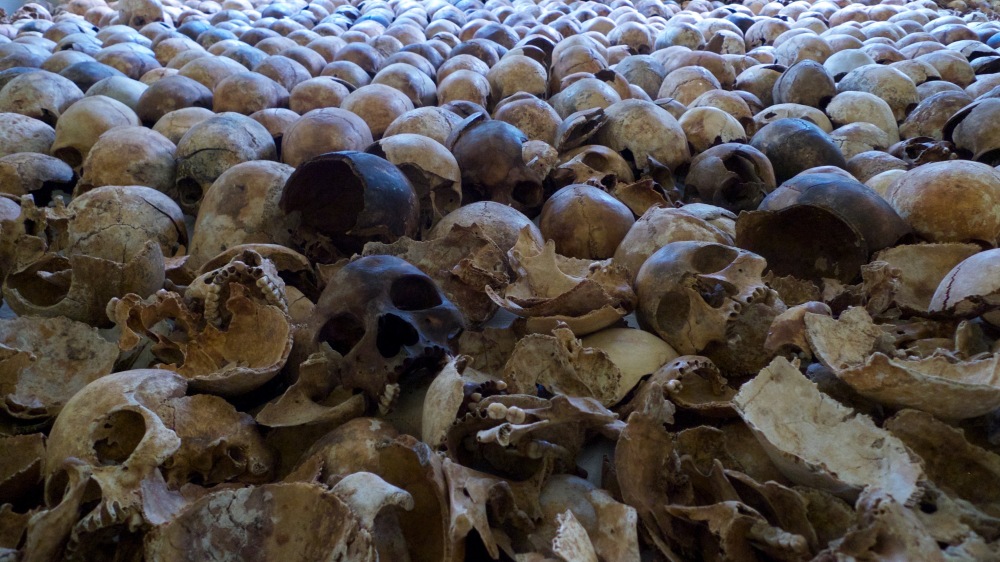
A collection of skulls from local victims of the 1994 genocide are displayed at the Nyarubuye Genocide Memorial site. Referred to as the Nyarubuye massacre, an estimated 2,000 Rwandans were killed on April 15, 1994 at the Nyarubuye Roman Catholic Church, where they sought refuge from Hutu attackers.
Today, ethnic identification has been banned by the Rwandan government: there are no Hutus and Tutsis – only Rwandans. What remains from the conflict are grenade damaged churches, mass graves, tattered clothing items, remnants of Tutsi identification cards, skulls, bones, mummified bodies and memories – painful memories.
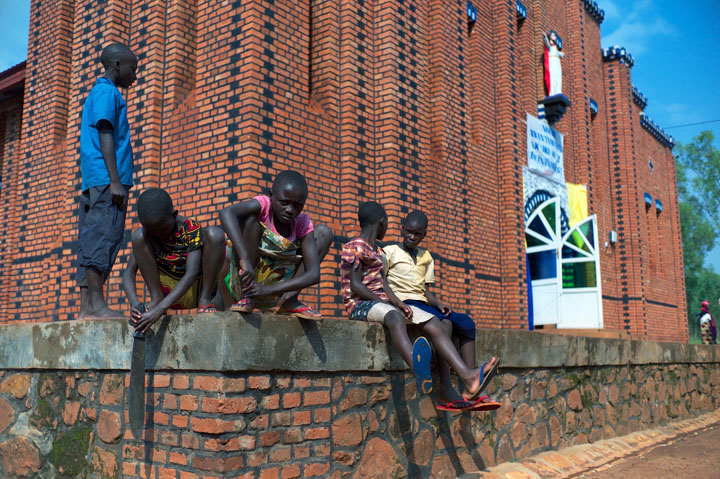
Several local children loiter outside the Nyarubuye Roman Catholic Church. In April 1994, Tutsis from several communities gathered at the this church seeking refuge but instead met their deaths, at the hands of Hutu attackers armed with machetes, traditional/crafted weapons, guns and grenades.
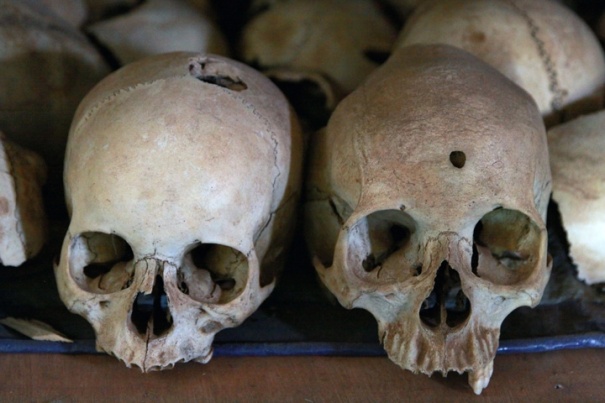
The skulls of these genocide victims display signs of a bullet wound and a blow from a blunt object such as a club. They are displayed at the Ntarama Genocide Memorial.
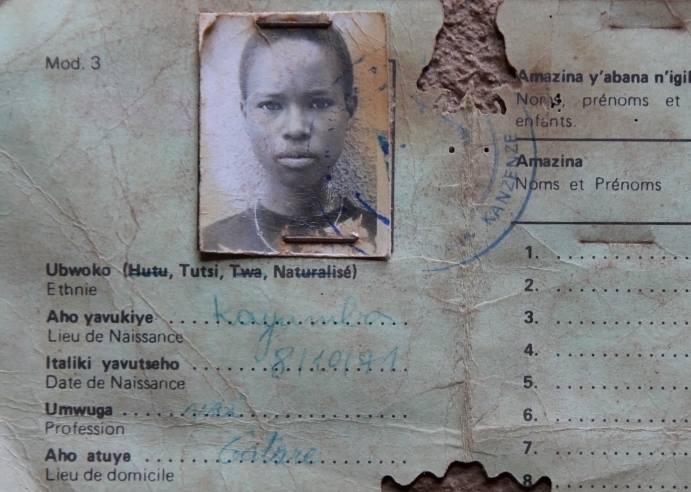
The worn national identity card of a young woman, whose family name was Uwimana, is kept in a storage container on the grounds of the Ntarama Church, which is now the Ntarama Genocide Memorial. According to the memorial site manager Uwimana was killed on these grounds along with 5,000 other Tutsis on April 15, 1994. During that period national identity cards were marked to label the ethnicity of the bearer; after the genocide such ethnic classification was banned by the government.
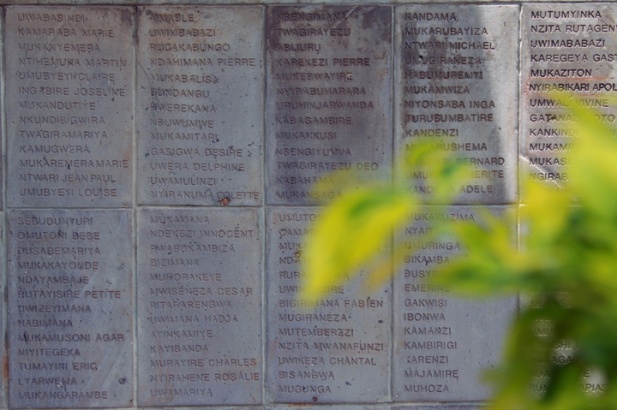
Although 5,000 victims are said to be buried at the Ntarama Genocide Memorial mass grave, the memorial wall only lists 260 names. The memorial site manager stated this is due to the challenges of identification: Many families were killed leaving no one to identify remains. Also, many Tutsis seeking safety came to the Ntarama site from the surrounding area – because they didn’t live in Ntarama they were unknown.
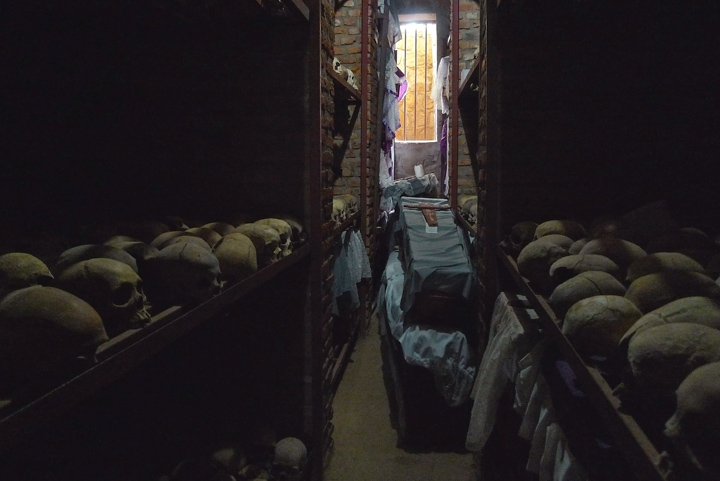
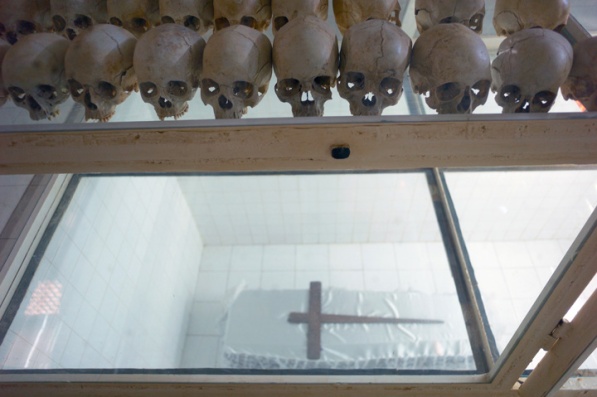
A coffin containing the body of Annonciata Mukandoli, 32, is displayed along with skulls of genocide victims at the Nyamata Genocide Memorial. The memorial is at the site of Nyamata Parish Catholic Church, where according to site manager, Rachel Murekatete, 45,354 genocide victims are buried. “10,080 Tutsi died inside and outside the grounds of the church on April 13 -14, 1994. Ms. Mukandoli was chosen to represent all the women who like herself were raped by multiple assailants and viciously killed.”said Ms. Murekatete.
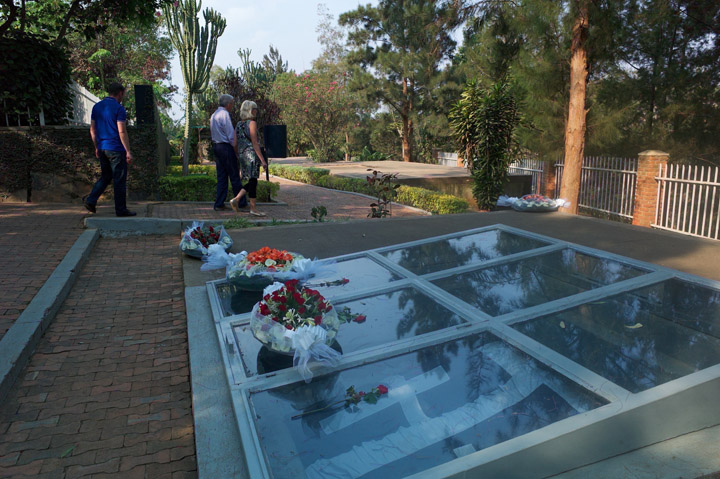
Visitors tour the burial grounds at the Kigali Genocide Museum where an estimated 250,000 victims, who were killed in the 1994 genocide, are buried in mass graves.
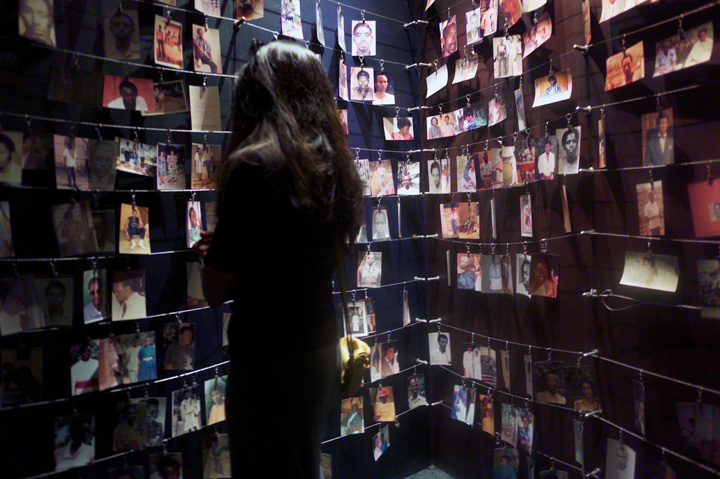
A visitor to the Kigali Genocide Museum views an exhibit of photographs of people who were killed during the 1994 genocide.

Ntarama Church displays signs of grenade damage that occurred on April 15, 1994.

A large sheet of white paper in the bible studies room, at the Ntarama Genocide Memorial, gives visitors an opportunity to write their thoughts.
To see more photographs by Ric Francis please visit http://www.ricfrancis.net.
Leave a comment